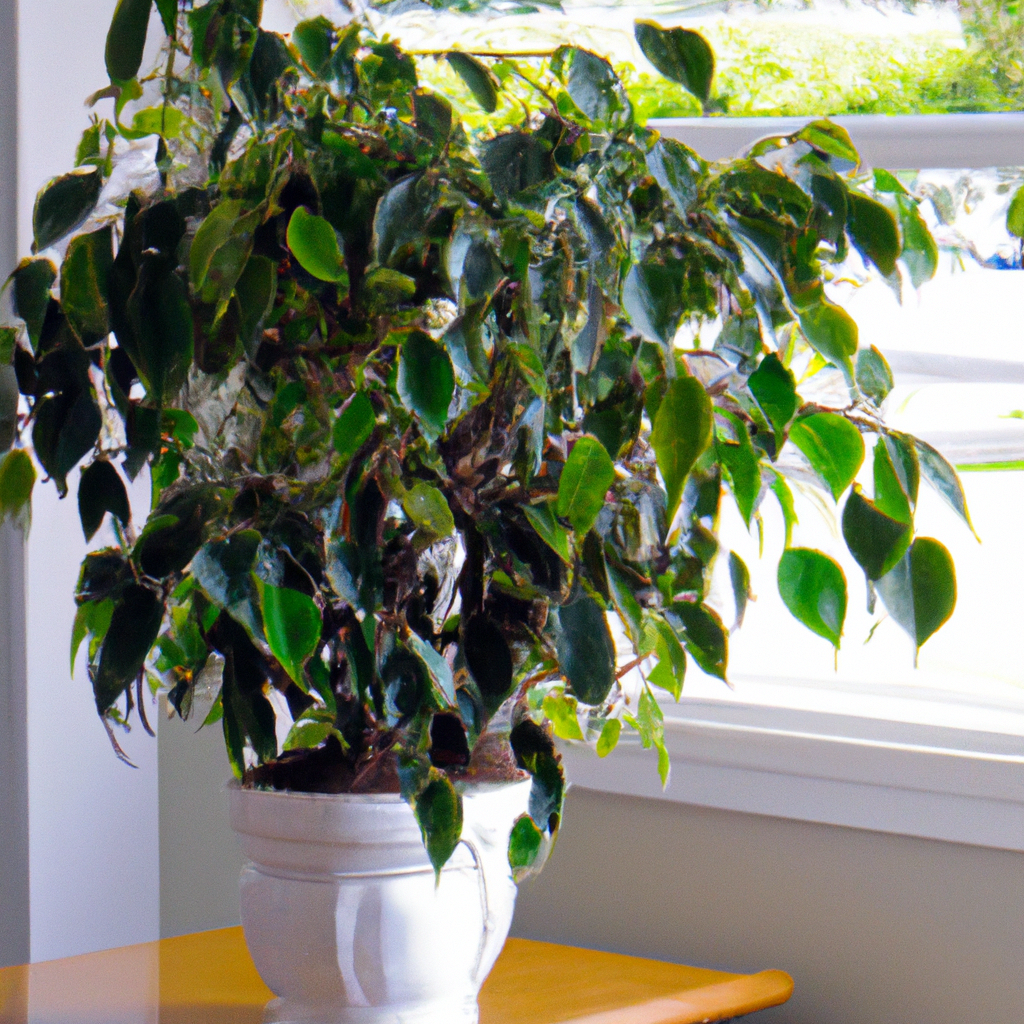Weeping Fig houseplants are often coveted for their beautiful leaves and cascading habit, but if you’re thinking of bringing one into your home, it’s important to be aware of the special care they require. Weeping Figs are relatively high-maintenance plants that need to be given the right environmental conditions if they’re going to thrive. So, before you add a Weeping Fig to your family of houseplants, you should arm yourself with some knowledge about their preferred growing conditions.
Weeping Figs typically need bright, indirect light, so if you don’t have a south-facing window or any other space where the plant can get ample sunlight, you may need to use supplemental lighting. They also prefer temperatures between 65-75°F (18- 24°C) and comparatively high humidity levels – 50-80%. To take things a step further, it’s also important to know that Weeping Figs can suffer from dehydration easily, so you should be sure to keep their soil on the moist side without making it soggy or overly wet. A watering can with a fine rose head is ideal for this purpose.
If the Weeping Fig is planted in the wrong kind of soil – one that doesn’t drain quickly enough – or overwatered, it will start to experience root rot which could lead to the plant’s demise. To avoid this problem, be sure to use soil specifically formulated for houseplants that contains peat moss, perlite, and/or vermiculite. This will help ensure proper drainage and prevent moisture from settling in the soil.
To keep your Weeping Fig in optimal health, it’s essential to fertilize regularly. Fertilize at least once every two weeks from spring through fall with a water-soluble 20-20-20 fertilizer diluted to half strength. If your plant is growing in a humid environment, try using a fertilizer that contains sulfur as this helps lower the pH levels in the soil. Additionally, check the leaves regularly for signs of pests – small whiteflies, mealybugs, and aphids can all take up residence inside of a Weeping Fig. If you discover these pests have made their way into your plant, treat them with an insecticidal soap spray.
Weeping Figs need some good pruning every once in a while. The main goal is to remove any dead or yellowing leaves and stems as they can indicate that your plant is in distress. Prune judiciously and never remove more than one-third of the entire plant at one time. Additionally, when pruning, use sharp scissors and make sure not to damage any healthy stems.
Although keeping a Weeping Fig happy requires a bit of effort and dedication, there’s no doubt it’s worth it! Not only do these houseplants make a stunning addition to any space with their lush foliage and cascading habit, but caring for them provides an opportunity to really connect with your green friends. Plus, with proper care and attention, a Weeping Fig can live for decades and become a family heirloom.
When it comes to caring for a Weeping Fig, information is key! Doing your research beforehand can help you create the perfect environment for your plant and avoid any unpleasant surprises down the road. For more detailed information on styling and caring for your Weeping Fig houseplant, visit Weeping Fig, where you’ll find all the resources you need plus expert advice from professional horticulturalists.
